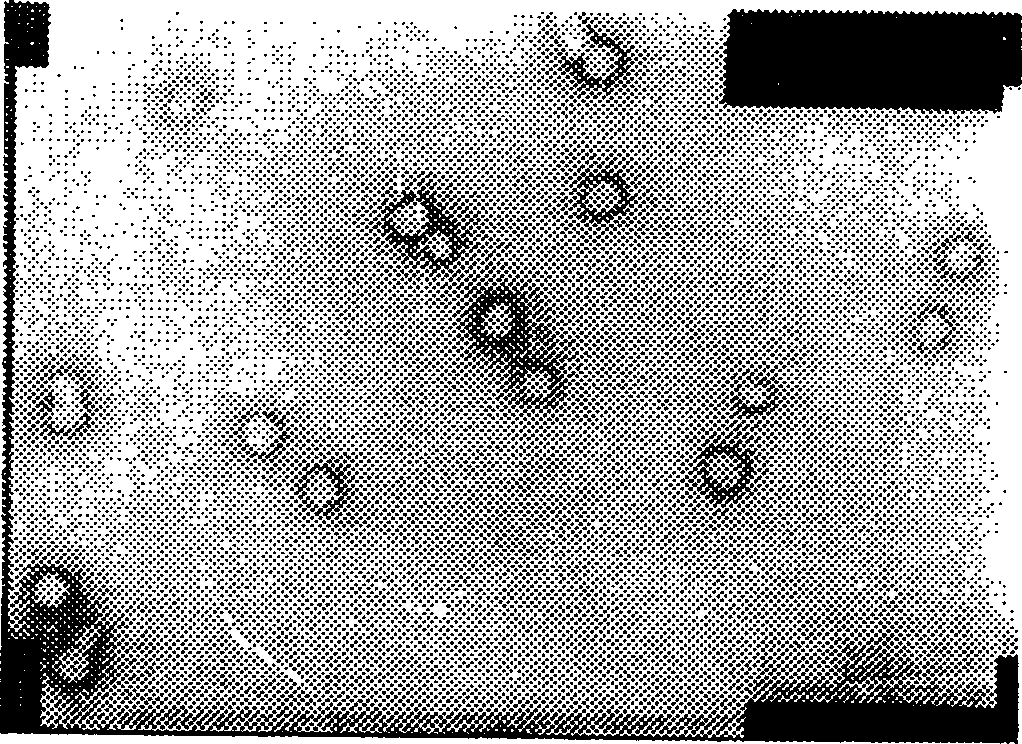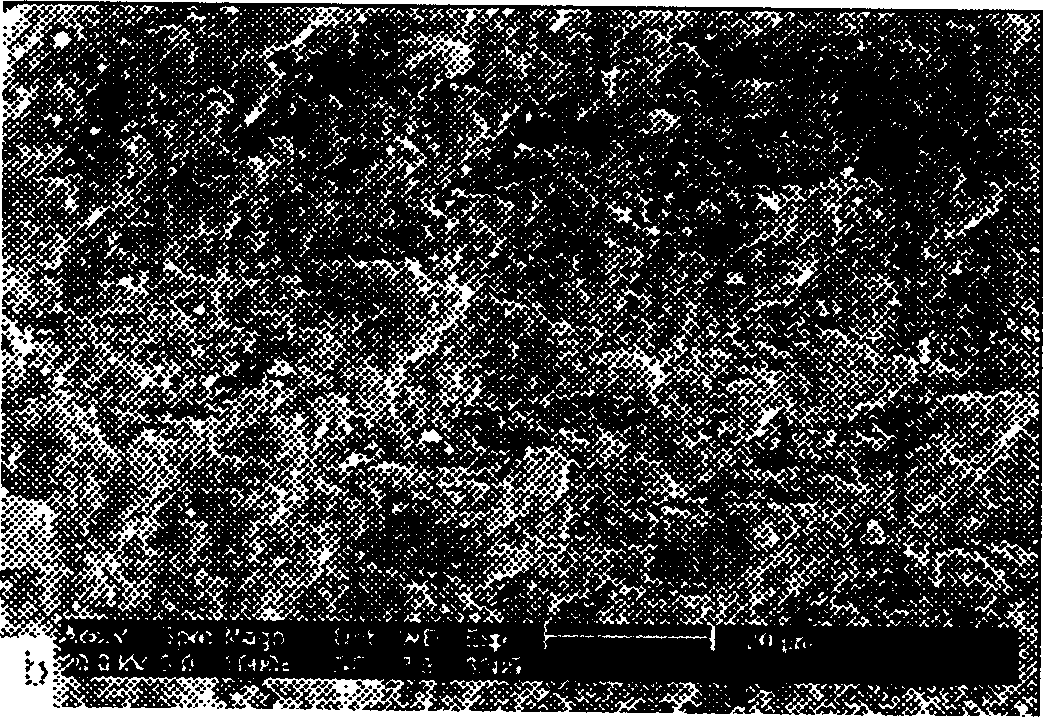Core-shell particles with acroleic acid esterified polyurethane as main body of core and making method and use thereof
A technology of acrylated and acrylic esters, which is applied to core-shell particles with acrylated polyurethane as the main core and its preparation method and application field, which can solve the problems of reduced compatibility, lower glass transition temperature, and incomplete phase separation and other issues, to achieve the effect of lowering the glass transition temperature, good effect, avoiding environmental pollution and toxicity
- Summary
- Abstract
- Description
- Claims
- Application Information
AI Technical Summary
Problems solved by technology
Method used
Image
Examples
Embodiment 1
[0046] Add 200g polyoxypropylene-oxyethylene glycol (M=1000) and 69.61g toluene diisocyanate (TDI) in the 500ml three-neck round-bottomed flask that stirrer, thermometer and condenser tube are arranged, logical nitrogen, while stirring, While raising the temperature to 75°C, react for 2h, then raise the temperature to 80°C, add 5 drops of catalyst dibutyltin dilaurate, and react for 1h. Cool down to 70°C, add 13.41g of dimethylolpropionic acid (DMPA), react for 6h, add 50ml of acetone to reduce viscosity, then cool down to 60°C, add 26.10g of hydroxyethyl methacrylate (HEMA), 0.31g of polymerization inhibitor Agent p-hydroxyanisole, reacted for 7h to obtain acrylated polyurethane.
[0047] Take 30 g of the above-prepared acrylated polyurethane, neutralize it with ammonia water, stir for 5 minutes, add 270 ml of deionized water, stir and emulsify at a high speed to obtain an acrylated polyurethane emulsion.
[0048] Add the above-mentioned emulsion and 15g butyl acrylate into ...
Embodiment 2
[0054] Add 250g polyethylene adipate glycol (PEA, M=2000) and 62.51g diphenylmethane-4,4'-bis For isocyanate (MDI), blow nitrogen, stir while heating up to 75°C, react for 2 hours, heat up to 80°C, add 5 drops of catalyst dibutyltin dilaurate, react for 1h. Cool down to 70°C, add 9.30g of dimethylolbutyric acid (DMBA), react for 5h, add 40ml of acetone to reduce viscosity, then cool down to 60°C, add 18.17g of hydroxypropyl methacrylate, 0.40g of polymerization inhibitor p-benzene Diphenol, reaction 6h, in acrylated polyurethane.
[0055] Take 30 g of the above-prepared acrylated polyurethane, neutralize it with ammonia water, stir for 5 minutes, add 300 ml of deionized water, stir and emulsify at a high speed to obtain an acrylated polyurethane emulsion.
[0056] Add the above-mentioned emulsion and 15g of butyl methacrylate into a 500ml four-neck round-bottomed flask equipped with a stirrer, a thermometer and a condenser, blow nitrogen gas, stir and disperse evenly for 30 m...
Embodiment 3
[0062] Add 200g polyε-caprolactone diol (PCL, M=1000) and 88.92g isophorone diisocyanate (IPDI) in the 500ml three-neck round-bottomed flask that stirrer, thermometer and condensing tube are arranged, blow nitrogen, While stirring, heat up to 75°C, react for 2h, heat up to 80°C, add 5 drops of catalyst stannous octoate, react for 2h, cool down to 70°C, add 15.01g of tartaric acid, react for 5h, add 50ml of acetone to reduce viscosity, then cool down To 60°C, add 26.10g hydroxyethyl methacrylate (HEMA), 0.31g polymerization inhibitor 2,6-di-tert-butylhydroquinone, and react for 8h to obtain acrylated polyurethane.
[0063] Take 30 g of the above-prepared acrylated polyurethane, neutralize it with ammonia water, stir for 5 minutes, add 200 ml of deionized water, stir and emulsify at a high speed to obtain an acrylated polyurethane emulsion.
[0064] Add the above-mentioned emulsion and 15g of ethyl acrylate into a 500ml four-necked round-bottomed flask equipped with a stirrer, a...
PUM
| Property | Measurement | Unit |
|---|---|---|
| particle diameter | aaaaa | aaaaa |
| glass transition temperature | aaaaa | aaaaa |
| impact strength | aaaaa | aaaaa |
Abstract
Description
Claims
Application Information
 Login to View More
Login to View More - R&D
- Intellectual Property
- Life Sciences
- Materials
- Tech Scout
- Unparalleled Data Quality
- Higher Quality Content
- 60% Fewer Hallucinations
Browse by: Latest US Patents, China's latest patents, Technical Efficacy Thesaurus, Application Domain, Technology Topic, Popular Technical Reports.
© 2025 PatSnap. All rights reserved.Legal|Privacy policy|Modern Slavery Act Transparency Statement|Sitemap|About US| Contact US: help@patsnap.com


